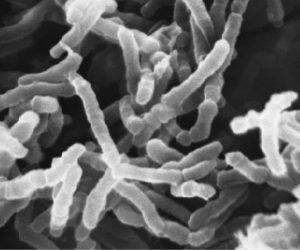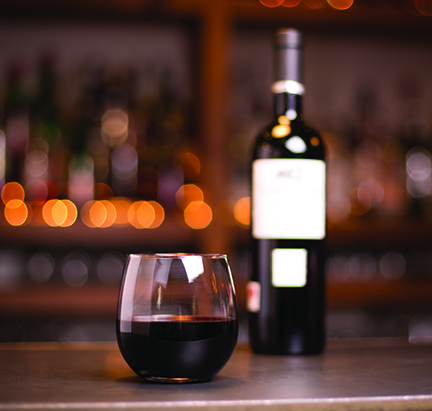Malolactic fermentation (MLF) may sound mysterious, but it’s a technique every home winemaker should master. It’s quite different from “regular” fermentation, in which yeast convert sugar into alcohol. MLF involves bacteria instead of yeast, and it usually begins when primary fermentation is complete, around 0° Brix.
Malolactic fermentation is conducted by Leuconostoc bacteria cultures. (You can find malolactic cultures at any home winemaking store.) These bacteria convert malic acid, which is naturally present in fruits like grapes and apples, to lactic acid. This reduces the acidity of the must and improves the flavor of your wine. After MLF, the wine’s flavor profile is more smooth, round and complex. Malolactic fermentation can occur spontaneously, but it’s best to conduct it yourself.
MLF is generally used for dry red wines but can also enhance some dry white wines, such as Chardonnay, Sauvignon Blanc and Pinot Gris. MLF is not recommended for sweeter wines, like Riesling, Gewürztraminer and Muscat.
Malolactic bacteria are finicky about their conditions. They aren’t tolerant of high alcohol, high sulfur dioxide, low temperatures and low pH. High-acid grapes make it difficult to cultivate malolactic bacteria; in general, it will work in red wines with a pH of 3.3 or higher and in whites with a pH of 3.1 or above.
The most-accepted rule of thumb is to wait until the end of primary fermentation before adding the culture. Malolactic activity can be detected by the presence of tiny carbon-dioxide bubbles. When the bubbles stop, MLF is complete. This should take one to three months.
Gary Carpenter: La Velle Vineyards, Elmira, OR
Started making wine at home in the 1970s. Took classes at UC Davis and Oregon State. Worked for Secret House Vineyards as a consulting winemaker before coming to La Velle, where he has worked for five seasons.
“There’s too much malic acid in red wines and some white wines, so by adding malolactic bacteria, you convert that malic acid over to lactic acid. Lactic acid is a mono-acid, so it’s ‘less acidic,’ so to speak, than malic. By changing all that malic acid to lactic, you’re lowering the total acidity and, by association, the pH and taste of acid in your wine.
By adding malolactic bacteria, you are going to see a pH shift. You need some basic equipment to make this reading, but you can easily obtain it at a winemaking shop. It only takes a few minutes to learn how to read pH and it will help you improve your wines.
When you test your pH you will be looking at a number of around 3.1 to 3.4. At the completion of malolactic fermentation, though, you will see that the number has shifted upwards. When the number increases, the wine has become less acidic. We consider 3.6 to be the ‘magic number’ that we do not want to exceed; higher than that, and you have to handle the wine with care.
Of course, temperature is really important: Malolactic bugs do not work well below 60 °F (16 °C). Malolactic fermentation plays a much more important role in colder climates, like Oregon, because the cool growing temperatures lead to grapes with higher levels of malic acid. In this case, you really need MLF to reduce the levels of malic acid. It will also improve the pH. In warmer climates like California, it is normal to get grapes with lower concentrations of malic acid. With these wines, less of the total acid is represented by malic, so the pH shift will be less noticeable.”
John Ferrington: Roche Winery, Sonoma, CA
Started making wine with his dad when he was nine. Studied viticulture and enology at UC Davis. Did graduate work in France. Has worked mostly in Sonoma and Mendocino Counties. Has been with Roche Winery since 1998.
“Microbial stability is the number one reason to conduct malolactic fermentation. Without it, unfiltered wine will try to go through the process itself, after it is bottled. When this happens, strains of bacteria can transform the wine’s residual sugars into lactic acid, acetic acid and other byproducts. This will cause the wine to be turbid and slightly bubbly, with off-flavors and aromas. That’s the tricky thing about malolactic fermentation. It doesn’t happen when you want it to, and then it does happen when you don’t want it!
When it comes to stability, it’s important to note that if the malolactic bacteria do not do their job, something else will. Wine is filled with all kinds of nutrients, and something is going to come along and eat them. Unfortunately, that’s not always going to be a net positive for your wine. But by adding malolactic bacteria, you control what eats those nutrients, and in doing so control the way your wine tastes.
You do malolactic fermentation for other reasons, too. For whites it adds complexity, softens the wine and rounds it out. (I should mention that there are some whites, however, that don’t benefit from malolactic fermentation, like Riesling and Gewürztraminer. The flavor changes that go along with MLF can be incompatible with these wines’ fruity character). For reds, one of the main benefits is that the wine becomes less acidic, which makes it more pleasant to drink.
My general rule regarding malolactic fermentation is ‘the sooner you start, the sooner you finish.’ One of the newer methods I have heard about, but never tried, is inoculating with the bacteria as soon as you start primary fermentation. The thought is that the wine is warmest during fermentation, since the yeast is generating considerable heat as it converts sugar to carbon dioxide and alcohol. And that heat will help you complete malolactic sooner. I’m going to try it soon. It’s a good strategy for wines with low pH or high acid, or styles that have historically been difficult to shepherd through MLF.
One important thing to remember: If you’re going to conduct malolactic, delay the addition of SO2 until MLF is complete. Malolactic bacteria don’t like free S02!”
Rob Thomas: Shalestone Vineyards, Lodi, NY
Agronomy degree from the University of Connecticut. Worked at Lamoreaux Landing Wine Cellars for seven years before going to Shalestone Vineyards.
“It is preferable to inoculate with malolactic bacteria at the end of fermentation, when Brix reads just about zero and all the sugar has been fermented away. Why? Because if malolactic bacteria ferment in the presence of sugar and most of the nutrients have been gobbled up by yeast, the bacteria could degrade the sugar and create volatile acidity.
Another reason to wait until the end of fermentation is because you’ll be able to determine if there are any flaws in the wine before you add the bacteria culture. As an example, the yeast might have been stressed during fermentation and created some off-flavors, so you can make some adjustments to correct the problems. You want to get a nice, clean yeast fermentation completed before you introduce the malolactic bacteria.
You need warm temperatures for malolactic fermentation, generally between 60 and 75 °F (16–24 °C). Since you make fresh-grape wine in the fall, it might be harder to keep it consistently warm with cold weather just around the corner. Many commercial winemakers want to get malolactic finished before wintertime, when the storage cellar tends to get pretty cool.
It’s best to check to make sure all the malic acid gets converted. You can easily buy kits for this. It’s a very simple test. Once you confirm that the conversion is complete, rack the wine and add some sulfite. Remember, MLF bacteria don’t like sulfite, so don’t add it until malolactic fermentation is complete. Then let your wine age.”







